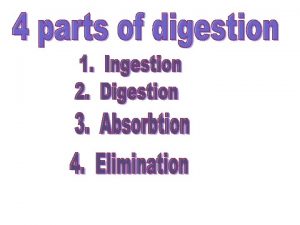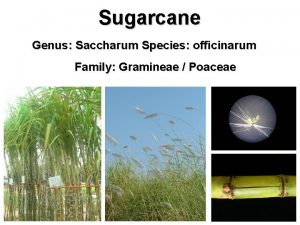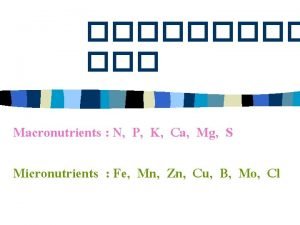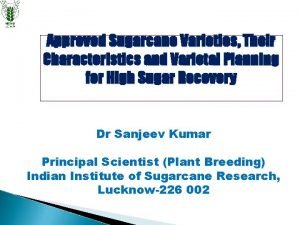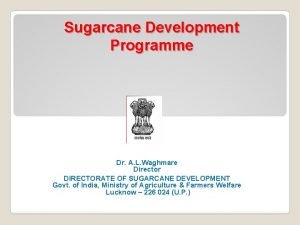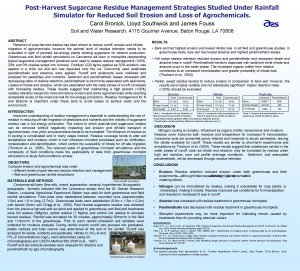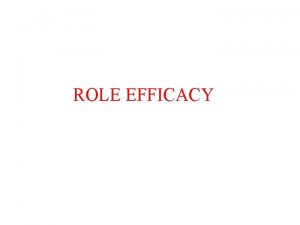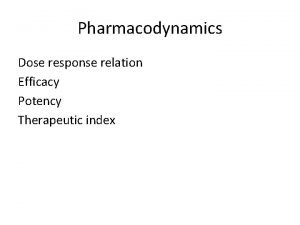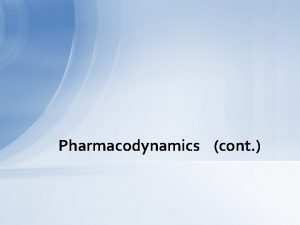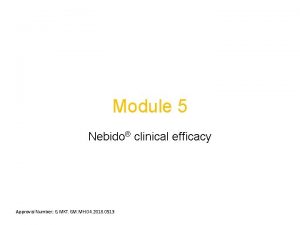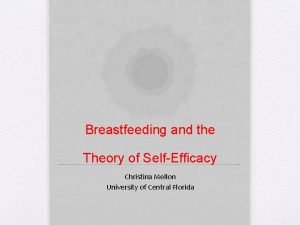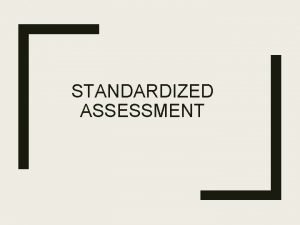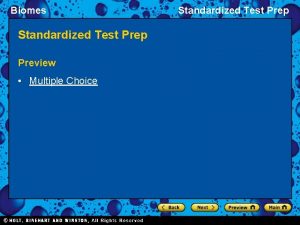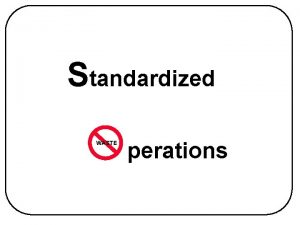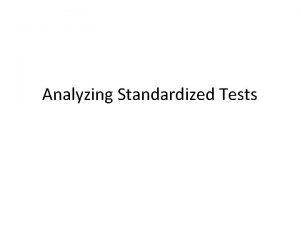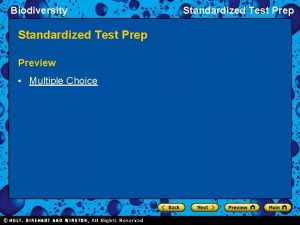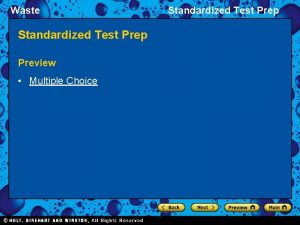Summary of Standardized Efficacy Trial for Sugarcane Aphids















- Slides: 15

Summary of Standardized Efficacy Trial for Sugarcane Aphids in Grain Sorghum SCOTT D. STEWART (PROJECT LEADER)

Co-Authors (data providers) § David Buntin (University of Georgia) § Francis Reay-Jones (Clemson University) § Gus Lorenz (University of Arkansas) § Scott Stewart (University of Tennessee) § Ali Zarrabi (Oklahoma State University)

A Reminder From Last Year’s Meeting Average Number of SCA (middle + flag leaf) A AB B B B 9 Trials C C 12 Trials 9 Trials

Another Reminder From 2015 Rate Response of Transform and Sivanto TRANSFORM SIVANTO (8 oz in one test)

Objectives To evaluate residual control of SCA provided by reduced rates of Transform and Sivanto by themselves and in combination with each other § Determine how tank-mix partners potentially used for other pests might influence the control of SCA § Food for Thought – Should we use reduced-rate mixtures of Transform and Sivanto as a method of resistance management?

The Protocol TREATMENTS METHODS § Untreated § Transform 1. 5 oz § Transform 0. 75 oz § Sivanto 2. 5 oz § Transform 0. 75 oz + Lorsban 16 oz § Sivanto 2. 5 oz + Lorsban 16 oz § Small plot § RCBD § 4 Replicates § No adjuvants § Count aphids at 3 -5, 7 -10 and 10 -15 DAT § Count at least 10 total leaves per plot § Collect yield where possible + Suggested optional treatments

Yield (B/A) of Standardized Efficacy Trials (2016) Treatment (Oz/Acre) GA SC AR TN-1 TN-2 OK Untreated - 42. 6 a 39. 3 b 38. 1 c 8. 8 c 45. 6 b 34. 9 C Transform (1. 5) - 49. 1 a 41. 3 b 79. 6 ab 38. 3 b 80. 9 a 58. 2 BC Transform (0. 75) - 48. 5 a 44. 8 ab 64. 2 b 29. 4 b 75. 9 a 52. 4 C Sivanto (5. 0) - 52. 9 a 57. 5 a 75. 5 ab 82. 8 a 83. 7 a 70. 9 AB Sivanto (2. 5) - 67. 7 a 57. 0 a 83. 1 a 73. 8 a 76. 3 a 72. 1 AB Transform (0. 75) + Sivanto (2. 5) - 79. 7 a 49. 3 ab 87. 7 a 85. 8 a 85. 7 a 77. 4 A Average P = 0. 0002 Significant effect of location on treatment response (P = 0. 0046)

Lorenz (University of Arkansas)

Stewart – 1 (University of Tennessee) Early planted (application at early-heading)

Stewart – 2 (University of Tennessee) Late planted (application pre-heading) S S S Lorsban (16 oz), Dimethoate 4 EC (16 oz), Pyreth (Mustang Max, 3. 2 oz)

Buntin (University of Georgia) S S Lorsban (16 oz), Pyreth (Karate Z, 1. 92 oz) S

Zarrabi (Oklahoma State University)

F. Reay-Jones (Clemson) S S S Lorsban (16 oz), Pyreth (Bifenthrin 2 E, 5 oz)

F. Reay-Jones (Clemson) S S Lorsban (16 oz), Pyreth (Bifenthrin 2 E, 5 oz) S

Conclusions Sivanto provided better control and protection than Transform The 2. 5 oz rate of Sivanto generally provided similar aphid control and plant protection as did the 5 oz rate § Low rates of Sivanto sometimes worked less quickly (especially in the lower canopy) Mixing reduced rates of Sivanto and Transform was a good treatment but did not substantially improve control § Adding other components, if anything, tended to hurt performance of Transform or Sivanto I’ll ask the question again … § Should we use reduced-rate mixtures of Transform and Sivanto?
 Are aphids suspension feeders
Are aphids suspension feeders Poaceae grass
Poaceae grass Major disease of sugarcane is
Major disease of sugarcane is Sugarcane drip irrigation
Sugarcane drip irrigation Npkcamg
Npkcamg Sugarcane pith
Sugarcane pith Sugarcane juice story
Sugarcane juice story Economic importance of sugarcane
Economic importance of sugarcane Post harvest management of sugarcane
Post harvest management of sugarcane Types of personality in organisational behaviour
Types of personality in organisational behaviour What is role efficacy
What is role efficacy Therapeutic index
Therapeutic index Potency vs efficacy
Potency vs efficacy Nebidos
Nebidos What is optimal self confidence
What is optimal self confidence Christina mellon
Christina mellon
